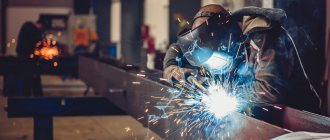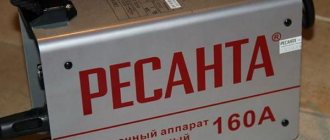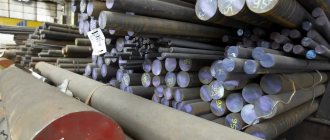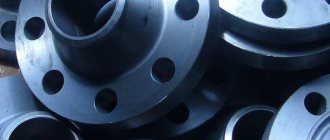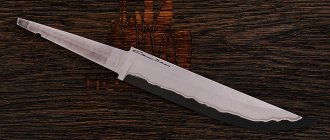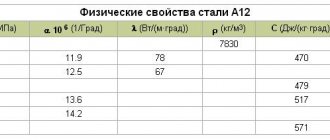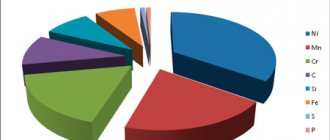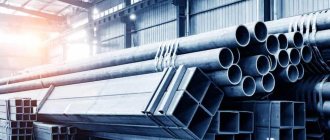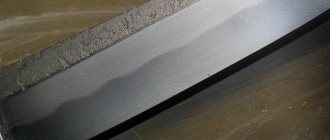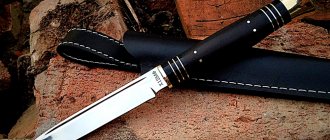Alloy and carbon materials
This type of material is used for the production of rigid (power) elastic elements. The reason for this particular application was that the high modulus of elasticity of this steel greatly limits the elastic deformation of the part that will be made from spring steel. It is also important to note that this type of product is high-tech and at the same time quite affordable. In addition to being used in automobile and tractor construction, this type of material is also widely used for the manufacture of power elements in various devices. Most often, parts made from this steel are called by one general name - general purpose spring steels.
In order to ensure the necessary performance of power elastic elements, it is necessary that spring steel have a high limit of not only elasticity, but also endurance, as well as relaxation resistance.
Production
Depending on further processing and the final type of part, steel is supplied in sheets, wire, hexagons, and squares. High performance qualities of the product are ensured by 2 components:
- the structure of the metal, which is determined by the chemical composition and subsequent processing;
- the presence of non-metallic inclusions in the structure, or rather the minimum quantity and size, which is eliminated at the stage of smelting and casting;
- the shape of the part (spiral, arc) and its dimensions, which is determined by the calculation method.
When the spring is stretched, the inner and outer sides of the coils experience different degrees of stress: the outer ones are less susceptible to stretching, while the inner ones experience the greatest degree of deformation. The same applies to the ends of the spring: they serve as attachment points, which increases the load in these and adjacent places. Therefore, steel grades have been developed that are preferably used for compression or tension.
Properties
In order to meet requirements such as endurance, elasticity and relaxation resistance, materials with a high carbon content are used. The percentage of this substance in the product used should be in the range from 0.5 to 0.7%. It is also important to quench and temper this type of steel. These procedures must be carried out at temperatures from 420 to 520 degrees Celsius.
It is worth noting that spring steel, hardened to martensite, has a low elasticity coefficient. It increases significantly only during tempering, when a troosite structure is formed. The process guarantees an increase in the ductility of steel, as well as its fracture toughness. These two factors are important in order to reduce sensitivity to stress risers, as well as increase the endurance limit of the product. It can be added that isometric hardening to lower bainite is also characterized by positive qualities.
Specifications of spring alloys
High- and medium-carbon types of these alloys are strengthened by fine cold destruction, allowing the introduction of shot blasting and water-abrasive methods. With this type of impact, residual compression forces are applied to the plane of the products.
In fact, any spring steel (non-corrosive, without special anti-corrosion properties) must undergo a high-heat operation using the through-hole method. Therefore, the finished metal product will have a troostite structure in its cut.
Oil hardening at a temperature of 830–880 degrees, combined with tempering at 410–480 degrees, guarantees an increase in the elasticity limit - the most important working property of the above steels. Isothermal hardening is often used, which provides not only high elasticity, but also increased plasticity, stability and viscosity of the substance.
Non-corrosive tape and wire made from alloys 70 and 65 are most often used to create machine springs. In the automotive industry, silicon spring steels of the spring rolling grade – 60С2А, 70С3А and 55С2 – are also dynamically used. They are prone to decarbonization, which reduces their elasticity and endurance characteristics. But due to the additives of chromium, vanadium and certain components, all these possible dangers are neutralized.
Areas of application for spring rolling of the most popular steel grades:
- springs for any devices and assemblies of the machine and automobile construction areas - 55S2, 50HG, 50HGA,
- heavily loaded springs – 60 S2G, 60S2, 65S2VA, 60S2N2A,
- Wear-resistant springs are round and flat (a strip is used), operating at high vibrations - 80, 75.85.
In conclusion, a little about the disadvantages
- poor weldability,
- difficulty cutting.
Knives
Spring steel for a knife has been the most common material for some time, especially among car owners. The production of sharp objects was indeed carried out from old springs that had become unusable for use in a vehicle. Knives made from such an unusual material were used both for various household needs and for ordinary cutting of food in the kitchen. The choice of this particular detail did not fall by chance. There were several reasons why spring steel became the main material for the homemade production of good knives.
The first reason is that due to the poor quality of roads, such a part as a spring often and quickly became unusable. Because of this, many car owners had an abundance of these units. The parts were just lying in garages. Availability was the first reason.
The second reason is the spring design, which included several sheets of carbon steel. It was from these elements that it was possible to make a pair of good knives.
The third reason is the high elasticity of spring steel, which allows processing of the material with only a minimal set of tools.
Features of knives
A significant reason why this particular type of steel has become widely used for the production of knives is the composition of the product itself. In production, this composition was called spring steel 65G. As the name suggests, this material is widely used for the production of leaf springs, springs, washers, and some other parts. The cost of this particular grade of steel is considered one of the lowest among carbon materials. But at the same time, its characteristics, that is, strength, flexibility and impact strength, are at their best. In addition, the hardness of the steel itself has also increased. All these features of carbon metal also played a decisive role in the choice of material for creating knives.
Steel 65G
Spring steel 65G is a structural high-carbon steel, which is supplied in accordance with GOST 14959. This grade belongs to the group of spring steels. The two most important requirements for this type of steel are high surface strength and increased elasticity. In order to achieve the required strength, up to 1% manganese is added to the metal composition. In addition, in order to achieve all the required indicators, it is necessary to carry out proper heat treatment of parts made from this grade.
The widespread and effective use of this type of steel is due to the fact that it belongs to the class of economically alloyed, that is, cheap. The main ingredients of this product are:
- carbon, the content of which ranges from 0.62 to 0.7%;
- manganese, the content of which does not exceed 0.9 to 1.2%;
- chromium and nickel content in the composition is from 0.25 to 0.3%.
Other components that make up steel are sulfur, copper, phosphorus, etc. These are impurities, the percentage of which is regulated by the state standard.
Steel grades according to GOST 14959–79
These are steels with a high carbon content, but with low alloying. Gosstandart 14959 means alloyed alloy of the following grades:
- 3K-7 - used in the production of cold-drawn wire, from which non-hardening springs are made;
- 50ХГ – produce springs for cars and springs for railways. compositions;
- 50HGA - purpose in production as in the previous brand of spring steel;
- 50HGFA – produce special springs and spring parts for cars;
- 50ХСА – special-purpose springs and small parts for watch mechanisms;
- 50HFA - they produce parts with increased load, with the requirements of the highest stability and strength, which operate at high temperatures - up to 300 degrees.
- 51HFA – for spring wire;
- 55С2 - for the production of spring mechanisms and springs used in tractor construction, mechanical engineering, for railway rolling stock;
- 55С2А – produces auto springs, springs for trains;
- 55S2GF - for the production of very strong springs of a special type, autosprings;
- 55KhGR – produce spring strip steel, the thickness of which varies from 3 to 24 mm;
- 60G - for the production of round and smooth springs, rings and other spring-type products with high wear resistance and elasticity, for example, staples, bushings, tambourines for braking systems used in heavy engineering;
Interesting: torsion steel, grade 60C2 - high-load springs, friction discs, spring washers;
- 60С2А - produce the same products as from the previous type of steel;
- 60S2G – type of spring steel from which tractor and auto springs are produced;
- 60С2Н2А – produce responsible springs with a high load on the alloy;
- 60С2ХА – for the production of highly loaded spring products subject to constant load;
- 60S2HFA is a round steel with calibration elements, from which springs and spring plates are produced with high responsibility;
- 65 – produce parts with increased strength and elasticity, which are operated under high pressure, high static loads and strong vibration;
- 65G - produce parts that will work without shock loads;
- 65GA – hardened wire for springs;
- spring steel grade - 65S2VA, highly loaded leaf springs and springs;
- 68A – hardened wire for the production of spring devices with a caliber of 1.2-5.5 mm;
- 70 – parts for mechanical engineering that require increased wear resistance;
- 70G – for spring elements;
- 70G2 - produce digging knives and springs for various industries;
- 70С2ХА – spring elements for watch devices and large springs for special purposes;
- 70С3А – springs with high load;
- spring steel grade 70HGFA – wire for the production of spring elements with heat treatment;
- 75 – any spring and other parts used in mechanical engineering that are subject to heavy vibration loads;
- 80 – for producing flat parts;
- 85 – wear-resistant parts;
- SH, SL, SM, DN, DM – machine springs operating under static loads;
- KT-2 – for the production of cold-drawn wire, which is wound without heat treatment.
The first numbers indicate the average carbon content in a particular steel and indicate it in percentage terms. After the numbers there is a letter indicating the specific alloying additives added to the alloy, and the last number is the content of the additives. It is worth noting that if the alloying binder is less than 1.5%, then the number is not written, a content of more than 2.5% is indicated by a three, an intermediate value between the first two values is written by the number 2.
Spring rolled products, whether non-corrosive strip, sheets, hexagons or squares, are divided into groups with certain characteristics:
- chemical composition – first-class stainless steel sheet, which is standardized according to values from 1 to 4B;
- processing method - hot-rolled strip, the surface of which is turned or ground, calibrated rolled products, forged, specially finished rolled products.
Heat treatment
There are several heat treatment modes for this type of steel. Any of them is selected in accordance with the production requirements for the finished product. Most often, two heat treatment methods are used, which guarantee the required properties from a chemical and physical point of view. These methods include normalization and hardening followed by tempering.
When carrying out heat treatment, it is necessary to correctly select the temperature parameters, as well as the time needed to carry out the operation. To choose these characteristics correctly, you should start from what grade of steel is used. Since the material of grade 65G belongs to the hypoeutectide type, this product contains austenite, presented in the form of a solid mechanical mixture with a small amount of ferrite. Austenite is a harder material in terms of structure than ferrite. Therefore, to carry out heat treatment of 65G steel, it is necessary to create a lower quenching temperature range. Taking this fact into account, similar indicators for this type of metal range from 800 to 830 degrees Celsius.
Quenching mode
How to harden spring steel? It is necessary to create the desired temperature regime, select the correct time, and also correctly calculate the time and temperature of the vacation. In order to give the steel all the necessary characteristics that are set by the future technical conditions of the part, it is worth carrying out the necessary hardening. To select the appropriate mode for this procedure, rely on the following characteristics:
- Not only the hardening method is important, but also the equipment used to heat the steel.
- Select the required hardening temperature.
- Select a suitable time period for hardening steel.
- Select the desired environment for the hardening process.
- It is also important to choose the right technology for cooling the part after the hardening process.
Spring steel grades
Steel for the manufacture of springs is supplied in the form of strips. After this, blanks are cut from it, hardened, tempered and collected in the form of bags. Brands of spring steel, such as 65, 70, 75, 80, etc., are characterized by the fact that their relaxation resistance is low, this disadvantage is especially noticeable when the part is heated. These steel grades cannot be used for work in environments whose temperatures exceed 100 degrees Celsius.
There are cheap silicon grades 55C2, 60C2, 70SZA. They are used to make springs or leaf springs, the thickness of which will not exceed 18 mm.
Higher quality steel grades include 50HFA, 50HGFA. If we compare it with silicon-manganese and silicon materials, then during tempering the temperature is much higher - about 520 degrees. Due to this processing procedure, these steel grades are characterized by high heat resistance, as well as low sensitivity to notching.
Car springs
Car springs work like springs. Their task is to work on bending, and not on tension-compression. Sheets of the product provide rigidity, returning the loaded part to its original state. Springs are a fairly rigid structure, in which additional sheets strengthen the most loaded areas.
This is done to distribute an even load along the entire length of the product, which is extremely important in Russian off-road conditions. Automobile stepladders are used to attach springs to truck axles and improve the rigidity of the entire structure.
Automobile stepladders must meet the design loads in terms of thickness and strength. The material of the product is high-strength steel, which will not break or deform under loads. The carving of the edges of the stepladder and its bends must fully correspond to the car model. When a spring is overloaded, it is destroyed. Therefore, it is very important to choose the right product for each truck.
